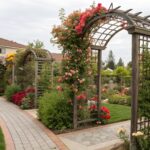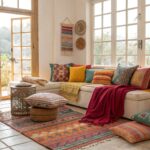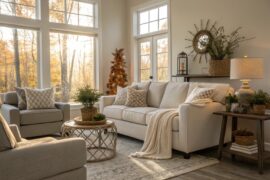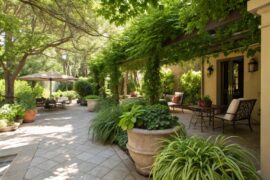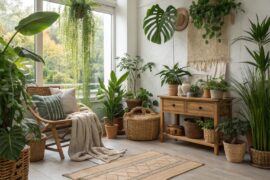As the seasons change outside our windows, our homes have the remarkable potential to evolve in harmony with nature. Creating spaces that transform throughout the year isn’t just aesthetically pleasing—it’s a mindful approach to living that keeps us connected to the natural world while enhancing our daily experience.
The Philosophy of Seasonal Design

The most successful seasonal homes begin with a strong foundation—a design philosophy that embraces change rather than resisting it. When we design with seasonality in mind, we acknowledge that our living spaces should be dynamic, not static.
The Indoor-Outdoor Connection

I’ve found that the heart of seasonal design lies in blurring the boundaries between indoor and outdoor spaces. This connection doesn’t require dramatic architecture—though it can be spectacular when resources allow.
Take the Hjertefolger family’s Nature House in Norway as an example. Their innovative home features a geodesic dome covering both their house and garden, creating a structure that responds beautifully to seasonal changes while maintaining comfort. The family has expressed great enthusiasm for their home, noting the magnificence of the dome and the positive impact it has on their lifestyle. The passive solar gain, coupled with the thermal mass of thick walls, keeps the house warm in winter and cool in summer—a perfect example of working with nature’s cycles.
For most of my clients, the indoor-outdoor connection is achieved through more accessible means—large windows, indoor plants that mirror outdoor growth patterns, or simply orienting furniture to capitalize on seasonal views.
Creating a Neutral Foundation
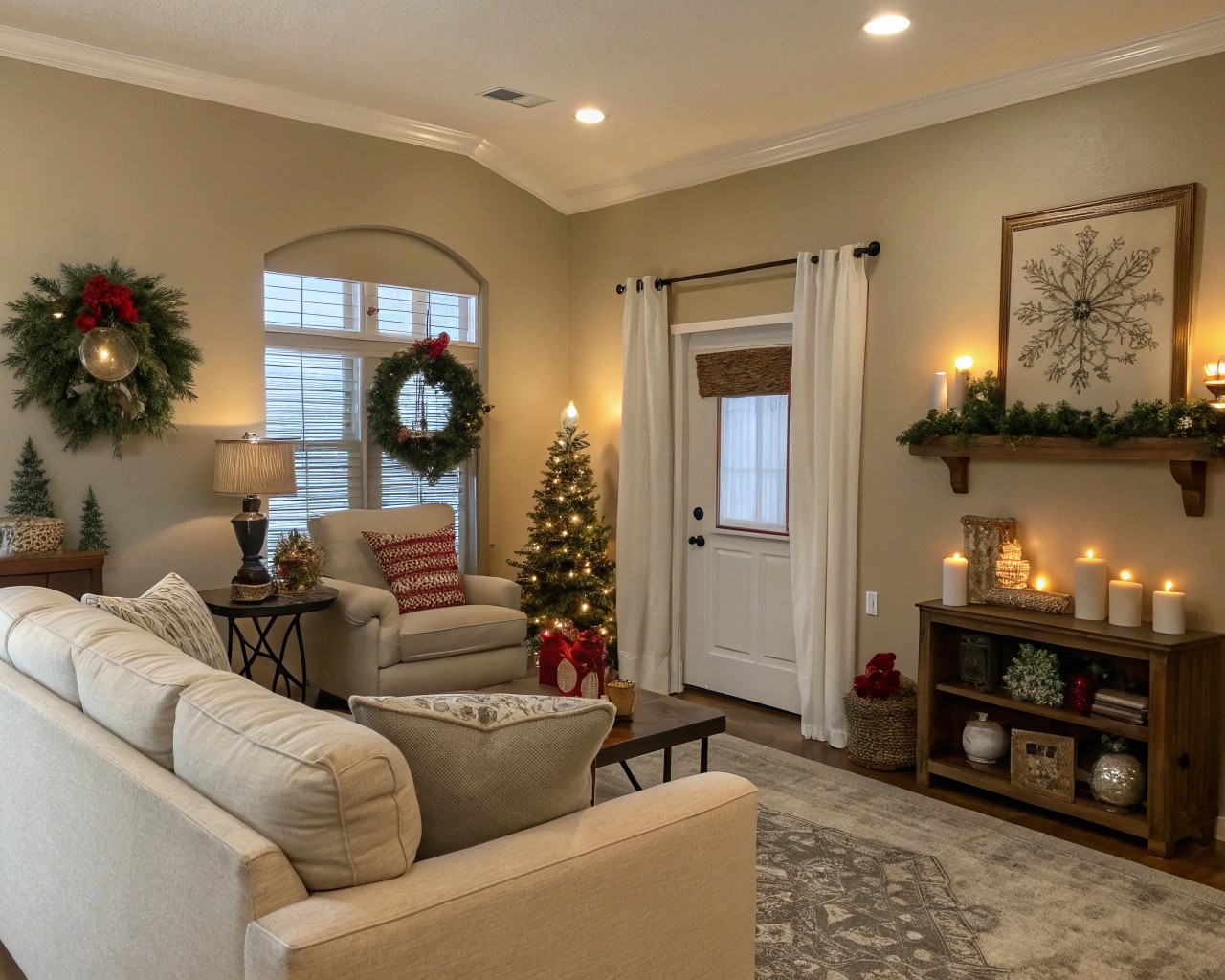
The most adaptable seasonal homes begin with a neutral foundation. I recommend clients invest in quality neutral furniture and wall colors that serve as a canvas for seasonal accents. Creating a timeless design begins with a neutral base palette—whites, grays, and beiges that allow seasonal elements to shine.
| Season | Base Elements | Accent Colors | Textures to Add |
|---|---|---|---|
| Spring | Neutral walls, natural wood | Mint green, pale yellow, lavender | Lightweight linens, botanical prints |
| Summer | White/light surfaces, exposed natural materials | Coral, turquoise, sunny yellow | Rattan, wicker, cotton |
| Fall | Warm neutrals, wood tones | Burnt orange, deep red, olive | Velvet, wool, chunky knits |
| Winter | Cool neutrals, metallic accents | Icy blue, silver, forest green | Faux fur, heavy textiles, metals |
Seasonal Interior Transformations
Spring: A Fresh Start
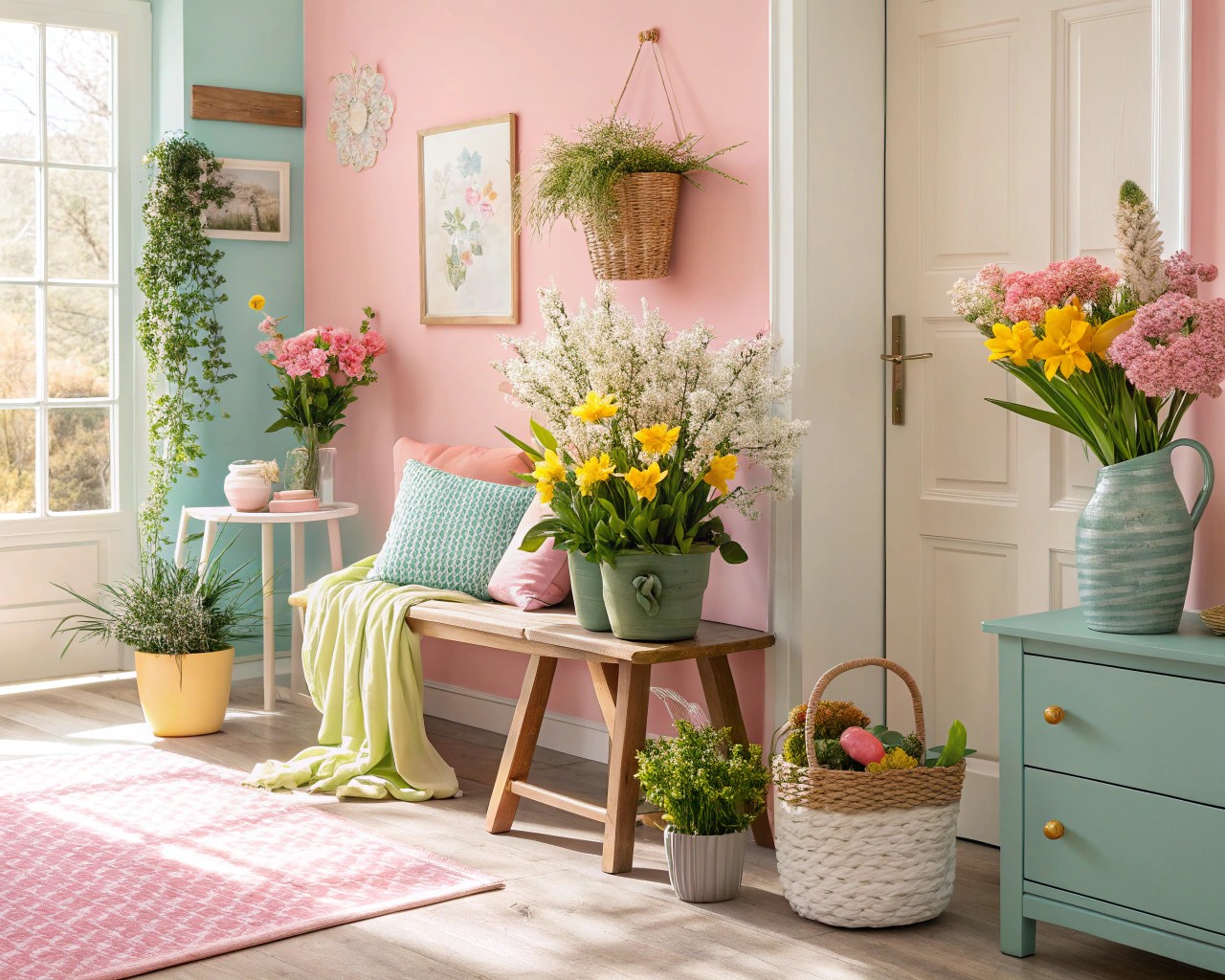
Spring represents renewal and rebirth, making it the perfect time to refresh your home. This season encourages a palette of soft pastels, fresh greens, and floral patterns.
When designing spring interiors, consider these elements:
- Paint Colors: Soft colors like mint green, pale yellow, and light lavender create a serene environment and pair beautifully with natural light.
- Decor: Incorporate floral prints into throw pillows, blankets, and wall art. Bring nature indoors with fresh flowers or potted plants.
- Window Treatments: Lighten up with sheer curtains that allow maximum natural light.
- Furniture Arrangement: Open up spaces to improve air flow and create a sense of expansion.
One client in Boston transformed her Victorian home each spring by simply switching dark velvet drapes for gauzy linen ones and replacing heavy wool rugs with lighter sisal versions. “It feels like the house can breathe again,” she told me, and that’s exactly the sensation we want to capture.
Summer: Bright, Bold, and Playful
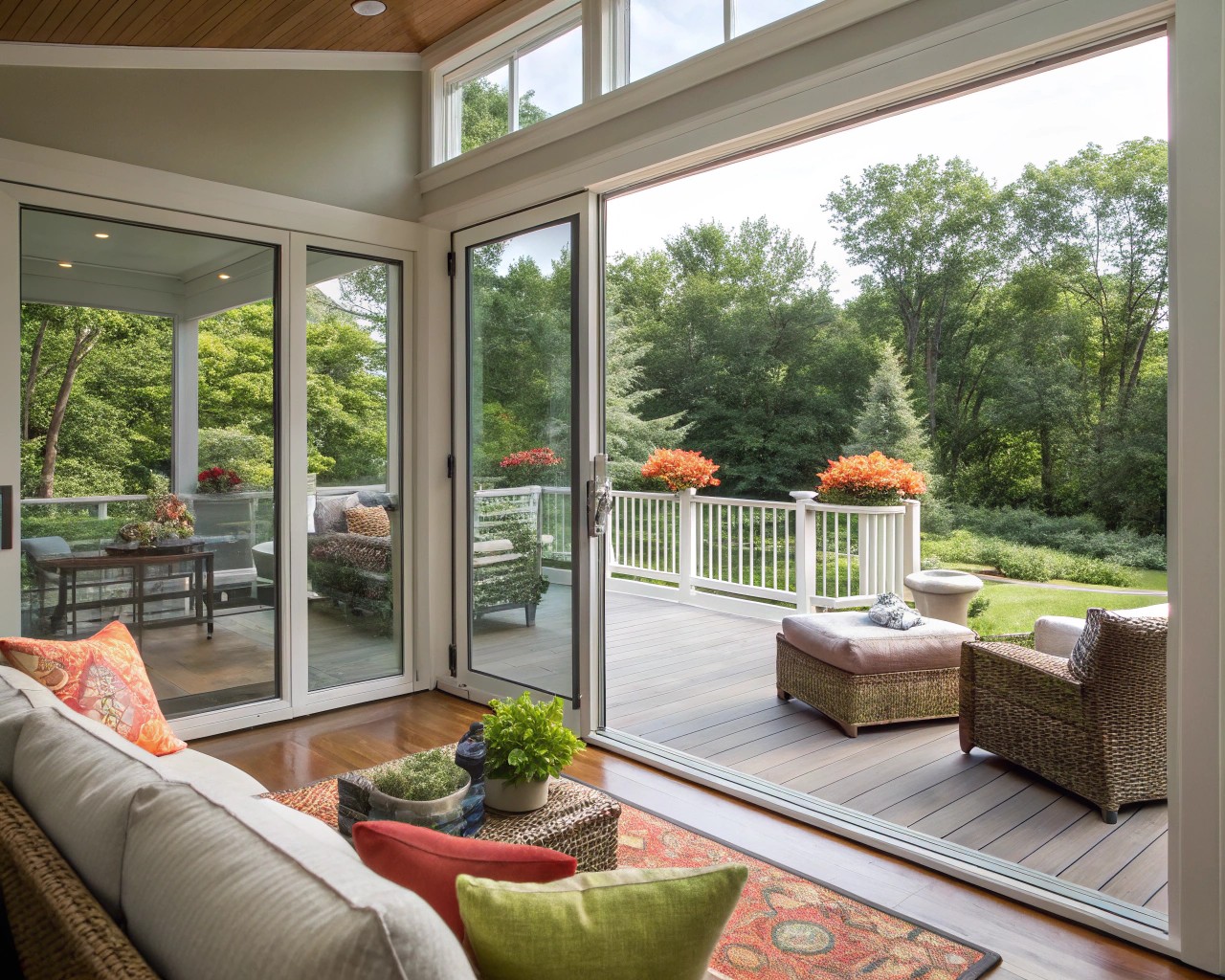
Summer design should reflect the relaxed, sun-filled mood of the season. This is the time to embrace bold, vibrant colors such as coral, turquoise, and sunny yellow, paired with light neutrals to keep spaces fresh and bright.
The key elements of summer design include:
- Indoor-Outdoor Living: Blur the lines between indoors and outdoors with large windows, bi-fold doors, and mirrors that enhance the sense of space.
- Tropical & Coastal Themes: Consider adding tropical or coastal-inspired elements such as palm prints, nautical stripes, and blue hues.
- Lighting: Use solar-powered options for outdoor spaces to create warm, inviting atmospheres during evening gatherings.
- Plants: Feature summer bloomers like lavender, marigolds, and sunflowers, which thrive in this season.
Fall: Embracing Warm Hues

As temperatures drop and leaves change color, our interiors should reflect this transformation through rich, warm tones and cozy textures.
For fall interiors, focus on:
- Color Transitions: Introduce burnt orange throw pillows, deep red accents, and mustard yellow details.
- Layered Textiles: Add chunky knit throws, velvet curtains, and wool rugs for both visual interest and practical warmth.
- Natural Elements: Fill wooden bowls with mini gourds, pinecones, or fall foliage for simple, effective seasonal statements.
- Lighting: Adjust lighting to compensate for earlier sunsets with warm-toned lamps and candles.
One of my most successful client projects involved a family in Vermont who maintained a “seasonal chest” in their attic with carefully organized textiles, artwork, and accessories for each season. Their fall transformation took just one afternoon but completely shifted the home’s atmosphere.
Winter: Cozy Comfort
Winter presents unique design challenges, but also opportunities for creating deeply comforting spaces. Historically, families in early American homes would gather primarily in the kitchen during winter, where the fire was kept going constantly throughout each day. Today’s homes offer more flexibility, but that instinct toward creating warm gathering spaces remains important.
For winter design, consider:
- Layering: Add visual and physical warmth through multiple layers of textiles.
- Light and Reflection: Incorporate mirrors and metallic accents to maximize limited natural light.
- Indoor Greenery: Feature evergreen elements and winter-blooming plants to maintain connection with nature.
- Comfort Centers: Create designated cozy areas with adequate seating, good lighting, and easy access to books, games, or crafts.
Seasonal Garden Transformations
The most successful homes extend their seasonal design philosophy to outdoor spaces, creating gardens that offer interest and beauty year-round.
Spring: Awakening the Garden
Spring gardens should capitalize on the explosion of new growth:
- Plant early bloomers like tulips, daffodils, and hyacinths for vibrant color.
- Enhance with charming decorations such as birdhouses and pastel-colored planters.
- Focus on creating habitats that attract pollinators returning after winter.
Summer: Creating an Outdoor Living Room
Summer gardens become extensions of our indoor spaces:
- Incorporate comfortable outdoor furniture to provide spots for relaxation and gathering.
- Use solar-powered lighting to illuminate pathways and create ambiance for evening enjoyment.
- Feature heat-tolerant bloomers that provide consistent color throughout the hottest months.
Fall: Harvesting Color and Texture
Fall gardens offer some of the most dramatic transformations:
- Embrace plants with colorful foliage like burning bush, viburnum, and native grasses.
- Create gathering spaces around fire pits or outdoor fireplaces for extended outdoor season.
- Incorporate edible elements like herb gardens and vegetable patches for harvest-time enjoyment.
Winter: Finding Beauty in Structure
Winter gardens reveal the bones of your landscape:
- Highlight architectural elements and plant structures once leaves have fallen.
- Incorporate evergreens strategically for winter color.
- Consider plants with interesting bark or persistent berries for winter interest.
Recommended Plants for Year-Round Interest
| Season | Perennials | Shrubs | Trees | Container Plants |
|---|---|---|---|---|
| Spring | Tulips, Allium, Bleeding Heart | Forsythia, Azalea, Lilac | Cherry, Magnolia, Redbud | Pansies, Primrose |
| Summer | Coneflower, Black-eyed Susan, Daylily | Hydrangea, Butterfly Bush, Rose | Crape Myrtle, Catalpa | Geraniums, Petunias |
| Fall | Asters, Sedum, Japanese Anemone | Burning Bush, Beautyberry, Oakleaf Hydrangea | Maple, Sweetgum, Ginkgo | Mums, Ornamental Kale |
| Winter | Hellebores, Winter Jasmine | Holly, Red-twig Dogwood, Witch Hazel | Evergreens, River Birch | Heather, Winterberry |
Case Studies in Seasonal Living
The Archipelago Retreat
Architect Xiao He’s vacation home in the archipelago demonstrates how thoughtful design can create a year-round connection to nature. Her design philosophy involves integrating nature into the living space while carefully maintaining a sense of comfortable separation from the elements.
The house features 19-meter-long laminated wooden beams, timber walls, and expansive glass sections that seamlessly blend with the natural environment. This transparency allows occupants to experience seasonal changes from a position of comfort, fostering appreciation for nature’s cycles without sacrificing modern comforts.
The Evans Family Home
One of my favorite projects involved helping a young family in New England create a home that would transform smoothly through all four seasons on a modest budget.
We began with a warm greige paint throughout main living areas—neutral enough to work with any seasonal palette but warm enough to feel cozy year-round. Their furniture received seasonal slipcovers: lightweight linen for spring/summer and rich velvet for fall/winter.
For each season, we created a “capsule collection” of decor items stored in clearly labeled bins in their attic. The most successful element was their dining room wall, which featured a large frame where we regularly rotated seasonal artwork, photography, and even pressed leaves and flowers.
Practical Implementation Strategies
Budget-Friendly Seasonal Transitions
Creating a home that transforms with the seasons doesn’t have to break the bank:
- Invest in quality basics: Splurge on high-quality neutral furniture pieces that will last for years, then save on seasonal accessories.
- Focus on textiles: Changing throw pillows, blankets, and slipcovers is one of the most cost-effective ways to transform a space.
- Rotate art and photography: Create a collection of seasonal art that can be rotated throughout the year.
- Use natural elements: Incorporate free or low-cost elements from nature—branches, pinecones, seashells, or seasonal flowers.
- Shop end-of-season sales: Purchase seasonal decor at clearance prices to use the following year.
Essential Seasonal Decor Items
| Season | Textiles | Aromatics | Natural Elements | Lighting |
|---|---|---|---|---|
| Spring | Lightweight throws, floral pillows | Fresh floral scents | Cut branches, potted bulbs | Increased natural light, soft ambient lamps |
| Summer | Cotton, linen, natural fibers | Citrus, ocean scents | Seashells, driftwood, fresh flowers | String lights, solar lanterns, candles |
| Fall | Wool, velvet, chunky knits | Cinnamon, apple, pumpkin | Pinecones, gourds, dried leaves | Amber-toned lights, lanterns, candles |
| Winter | Faux fur, heavy knits, flannel | Pine, cedar, vanilla | Evergreen branches, berries, pinecones | Fairy lights, candles, fire elements |
Living With the Seasons
Beyond the physical elements of design, truly seasonal homes incorporate lifestyle changes that honor the natural rhythm of the year.
In my own home, I’ve found that being intentional about seasonal transitions creates natural opportunities for decluttering and reassessing what truly matters. Each seasonal shift prompts a gentle evaluation of what to keep, store, or pass along.
We can design our homes to better support the activities that naturally shift with the seasons:
Spring
– Nature observation stations near windows
– Dedicated areas for seed starting and plant propagation
– Clean, open spaces that invite movement and fresh air
Summer
– Outdoor dining and entertaining areas
– Transition zones between indoor and outdoor spaces
– Food preservation and garden harvest processing areas
Fall
– Cozy gathering spaces for entertaining
– Homework and project areas as school resumes
– Storage solutions for summer equipment
Winter
– Indoor exercise spaces
– Craft and hobby areas
– Movie and game night setups

